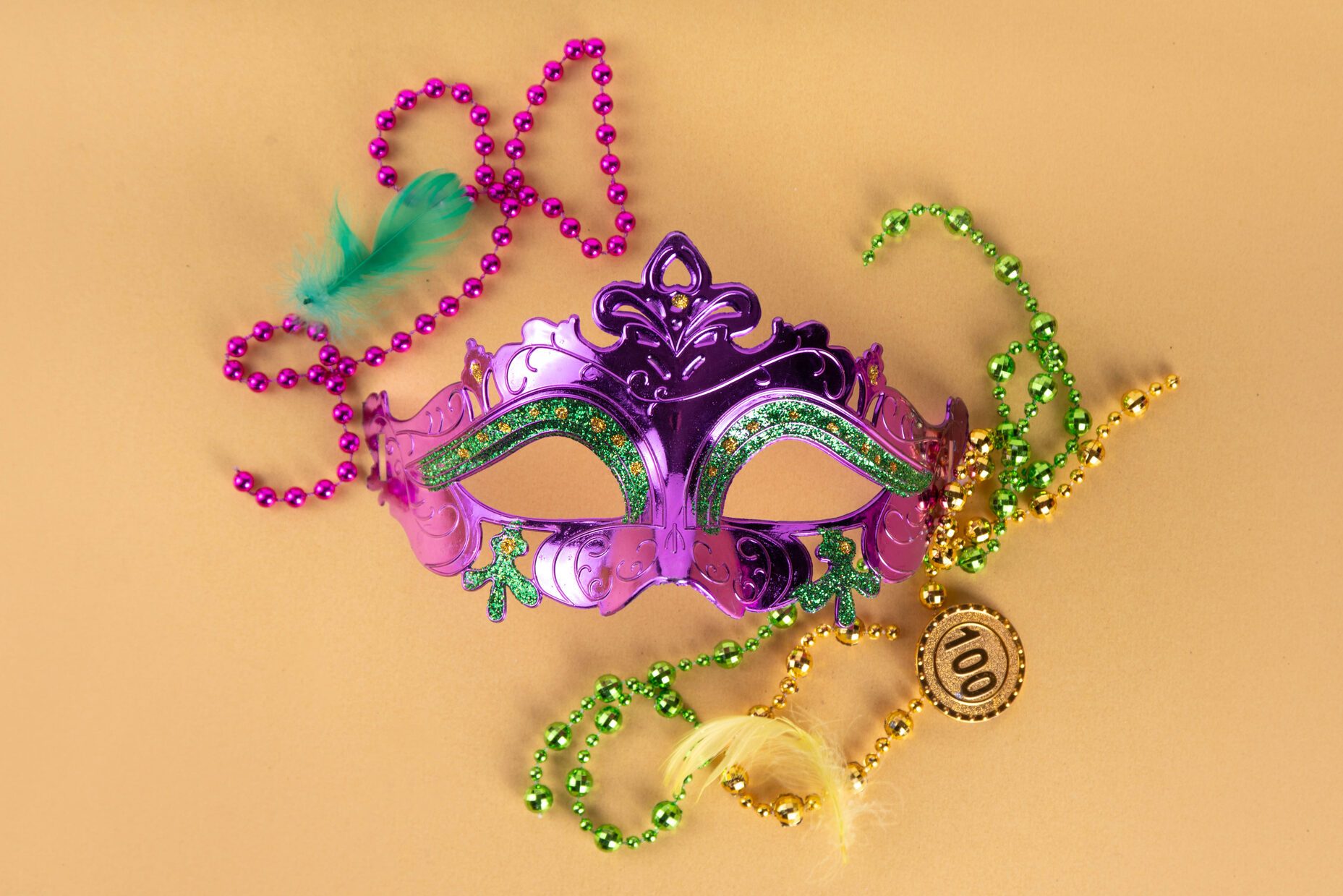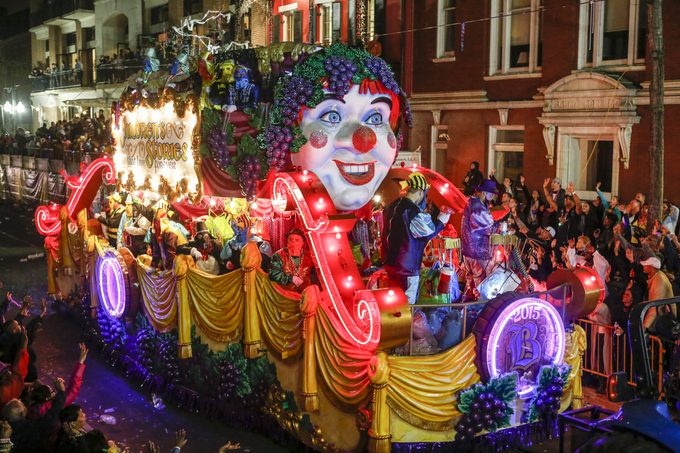Mardi Gras in New Orleans is called "The Greatest Free Show on Earth." Here's what to know about its popular symbol: the Mardi Gras masks.

The History, Story and Meaning Behind Mardi Gras Masks

Mardi Gras is bursting with vibrant traditions, and few are as iconic as attending parades, indulging in delicious and colorful king cakes and donning elaborate Mardi Gras masks. But have you ever wondered about the deeper meaning behind these artistic creations?
Mardi Gras masks are more than just festive accessories—they carry a rich history and cultural significance. Every detail, Mardi Gras color and design tells a story, and the artists who craft them pour their heart and soul into the process.
To uncover the fascinating world of Mardi Gras masks, we spoke with third-generation float masker Jonathan Bertucceli and Arthur Hardy, the mastermind behind the award-winning Mardi Gras Guide magazine.
So if you’re gearing up to celebrate Mardi Gras on March 4 and want to elevate your experience with a mask of your own, keep reading! Knowing the stories and traditions behind these masterpieces will make this year’s celebration even more memorable.
Get Reader’s Digest’s Read Up newsletter for more holiday tips, fun facts, humor, cleaning, travel and tech all week long.
What is the history of Mardi Gras masks?
The origins of Mardi Gras date back even further to medieval Europe and it celebrates the period before Lent, the 40 days leading up to Easter when many people fast. Some historians theorize that the roots of the holiday go back even further to ancient Rome and the festival of Lupercalia, which was held in mid-February. The festival celebrated the season of fertility and involved animal sacrifices, feasting and random sexual couplings. The celebration of the holiday may have been incorporated into Lent, as the Catholic Church began converting pagans and figured it would be easier to do so if they let them keep their holiday, or so the thinking goes.
After Mardi Gras made its way to the United States, masked balls flourished under French rule in the late 1700s, but were later banned by the Spanish governors. The prohibition continued when New Orleans became an American city in 1803, but by 1823, the Creole populace prevailed upon the American governor, and balls were again permitted. Four years later street masking was officially made legal, according to Hardy’s Mardi Gras Guide.
What is the meaning of Mardi Gras masks today?

Today, masks continue to be at the heart of the spirit of Mardi Gras. “Riding on a float is a privilege and wearing a mask is sacred,” notes Bertucceli. “You’re supposed to cut loose—and with a mask, you can act as foolish as you want and nobody knows who you are.” And that’s exactly what folks do, especially in the French Quarter. “You don’t bring your children down there; every year there’s someone without all their clothes on. It’s X-rated,” he says.
What do the Mardi Gras masks represent?
“Wearing the mask is the custom, part of the mystique of carnival. You’re not supposed to know who is one the float throwing you gifts [beads, cups and other trinkets],” says Hardy. Fun and games aside, wearing a mask is serious business—and it’s required by law if you’re riding on a Mardi Gras float, though at all other times of the year, it’s against the law in Louisiana to wear a mask in public.
It’s not just the law you would be breaking, but krewe (the clubs that put on the various parades and balls) rules, too. “Many organizations film the parade. If you’re caught without your mask, not only are you thrown out of the krewe, you could be fined $500,” says Hardy. You’ll be fined because it’s a major breach of the Krewe code.
About the experts
|
Why trust us
At Reader’s Digest, we’re committed to producing high-quality content by writers with expertise and experience in their field in consultation with relevant, qualified experts. We rely on reputable primary sources, including government and professional organizations and academic institutions as well as our writers’ personal experiences where appropriate. For this piece on Mardi Gras masks, freelancer Sheryl Nance-Nash tapped her experiences as a travel and business writer, along with speaking with Jonathan Bertucceli, a third-generation float maker, and Arthur Hardy, a nationally recognized authority on Mardi Gras in New Orleans. We verify all facts and data, back them with credible sourcing and revisit them over time to ensure they remain accurate and up to date. Read more about our team, our contributors and our editorial policies.
Sources:
- Jonathan Bertucceli, third-generation float maker and the owner of Studio 3
- Arthur Hardy, fifth-generation New Orleanian, founder of the award-winning “Mardi Gras Guide” magazine
- Mardi Gras Orleans: “Mardi Gras Masks”
- Louisiana Laws: “RS 14:313”
- History: “Lupercalia”




















